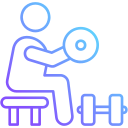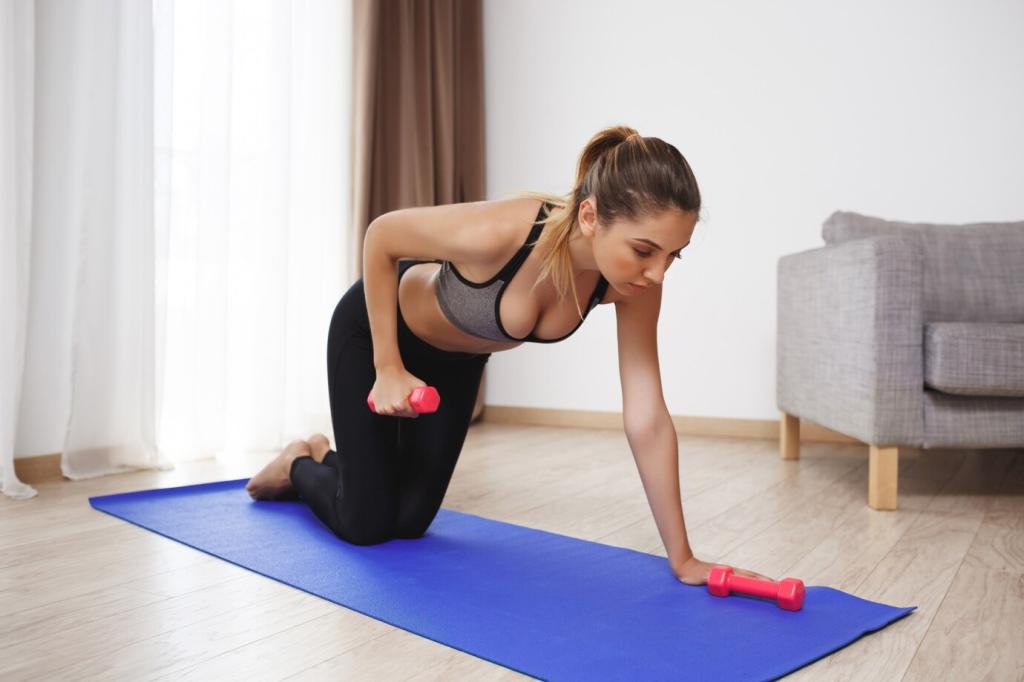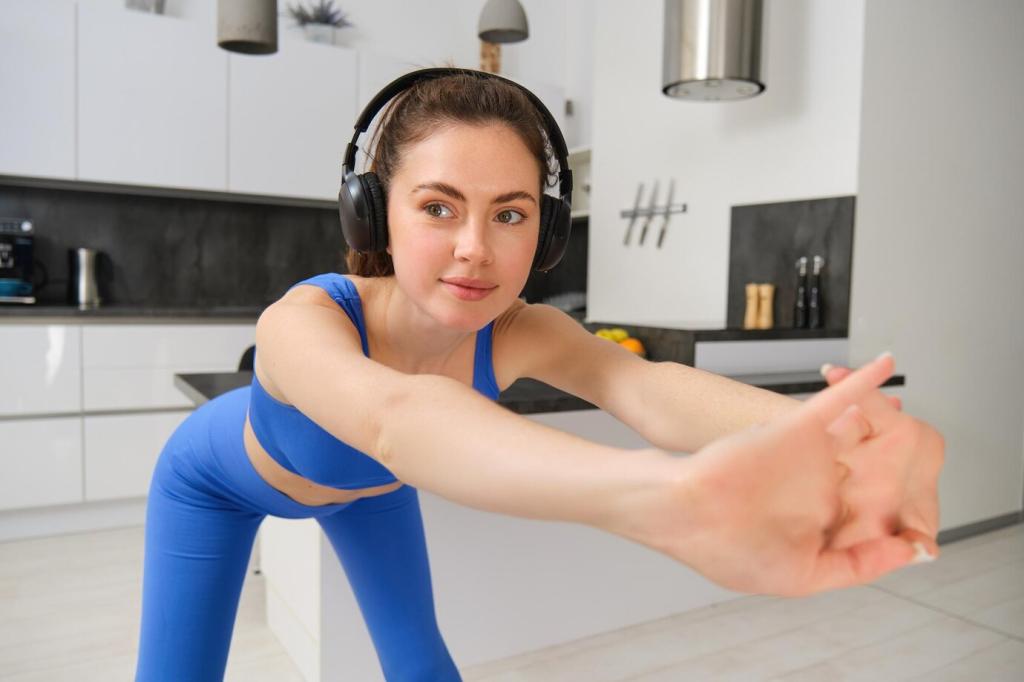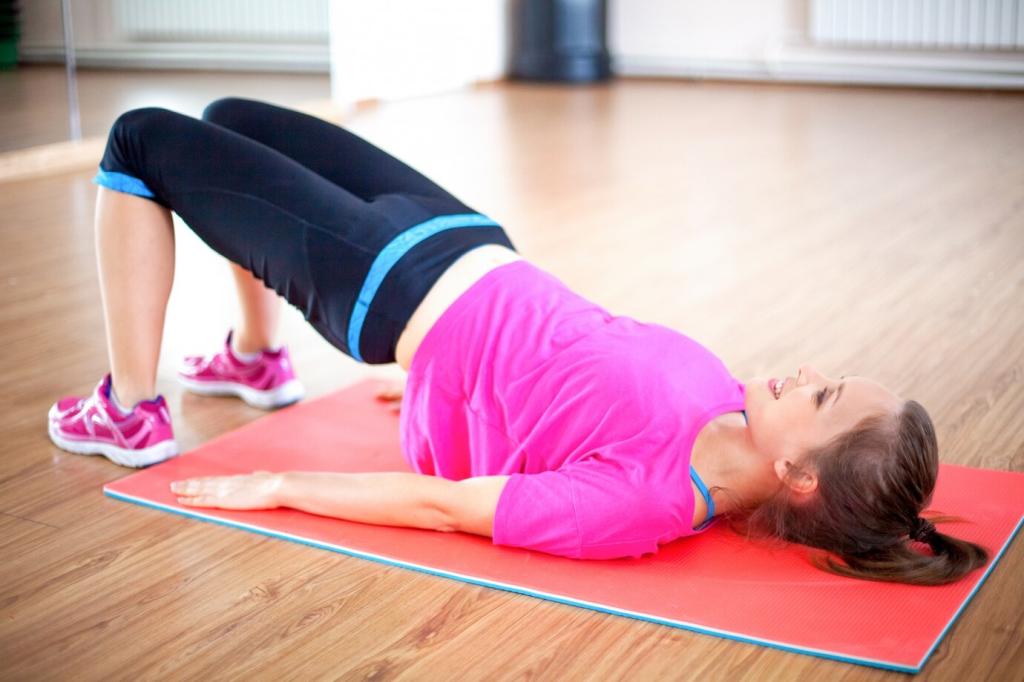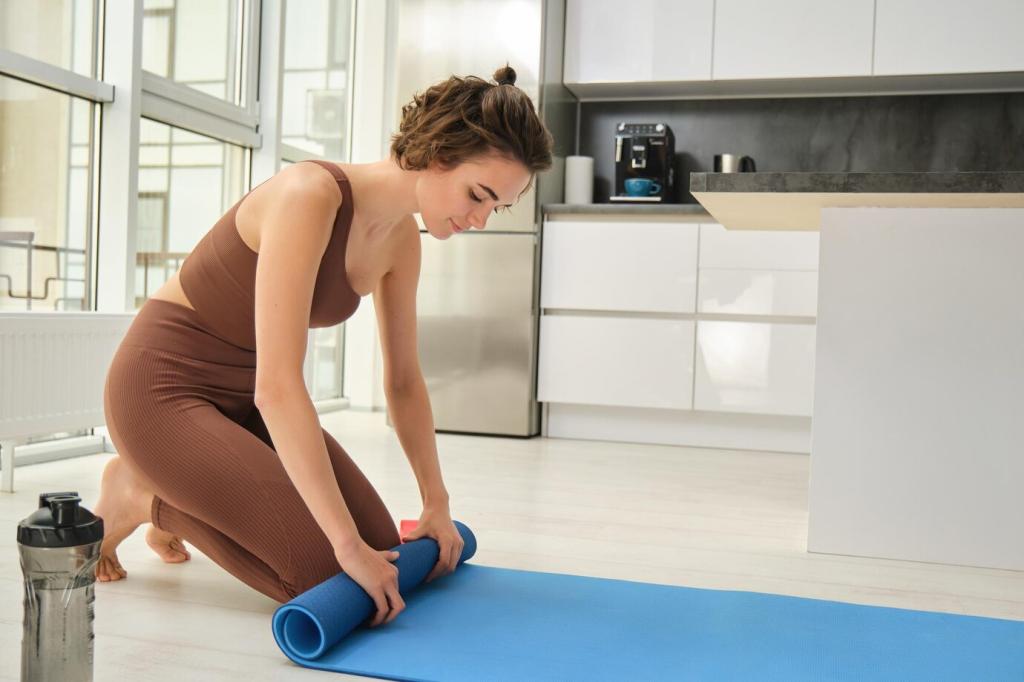Minimal Gear, Maximum Results
Pick dumbbells you can press for twelve controlled reps, leaving two in reserve. Choose medium tension bands. This balance ensures technique stays crisp while muscles work meaningfully, the sweet spot for reliable beginner progress at home.
Minimal Gear, Maximum Results
Try three rounds: goblet squats, band rows, floor presses, Romanian deadlifts, and dead bugs. Perform eight to twelve reps each, resting one minute between movements. This circuit trains everything efficiently, perfect for busy beginners training at home.
